#aulopiformes
Text


baby tripod fish (bathypterois grallator) | source
#stim#tripod fish#sea creatures#marine life#sfw#blue#red#clear#black#baby animals#fish#bathypterois grallator#aulopiformes#deep sea creatures#bioluminescence#underwater#nature#ishy gifs#postish
30K notes
·
View notes
Text
Taxonomy Tournament: Fish
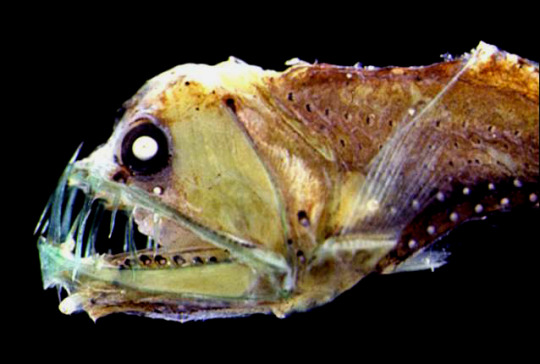
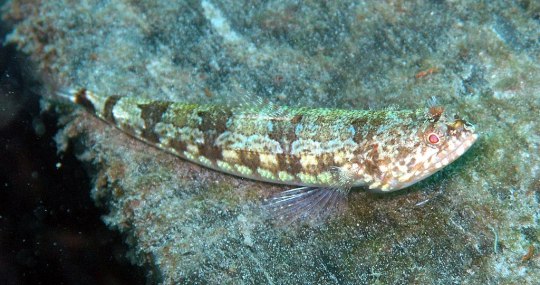
Stomiiformes. This order is made up of deep-sea fishes. It includes dragonfishes, loosejaws, viperfishes, and bristlemouths, the most populated family of vertebrates, with population numbering in the hundreds of trillions to quadrillions.
Aulopiformes. This order is made up of lizardfishes, many of which are deep-sea. Some are hermaphroditic with the ability to self-fertilise.
#animals#biology#polls#poll tournament#zoology#viperfish#bristlemouths#fish#lizardfish#Stomiiformes#Aulopiformes#0x2cv0x53
66 notes
·
View notes
Text
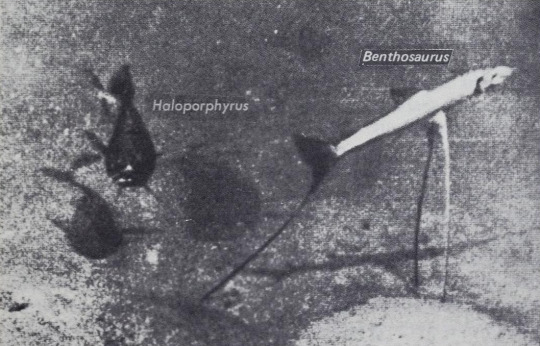
Morid cods and tripod fish
By: Unknown photographer
From: Abyss: The Deep Sea and the Creatures that Live in It
1971
#morid cod#gadiform#bony fish#fish#tripod fish#aulopiform#1971#1970s#Abyss: The Deep Sea and the Creatures that Live in It
29 notes
·
View notes
Photo
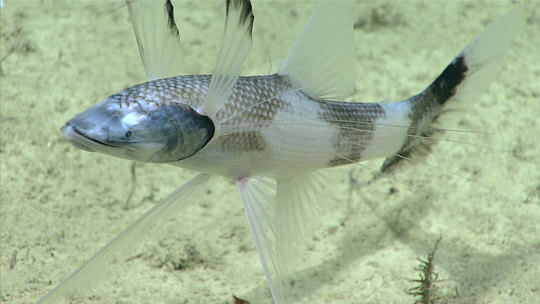
Tripod fish (Bathypterois viridensis)
Photo by NOAA
#tripod fish#bathypterois viridensis#bathypterois#ipnopidae#chlorophthalmoidei#aulopiformes#eurypterygia#neoteleostei#euteleostei#teleostei#neopterygii#actinopterygii#osteichthyes#vertebrata#chordata
214 notes
·
View notes
Photo
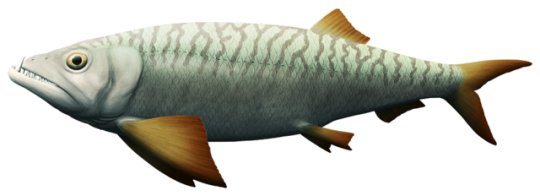
Almost-Living Fossils Month #02 -- The Saber-Toothed “Herring”
First appearing in the mid-Cretaceous, about 113 million years ago, Enchodus was a small-to-medium-sized genus of predatory fish. Different species ranged from a few centimeters to up to 1.5m in length (4′11″), with Enchodus gladiolus here being an averaged-sized example at about 60cm long (2′).
The most distinctive feature of these fish were the enlarged fang-like teeth in both their upper and lower jaws, over 6cm (2.4″) long in the largest individuals, which may have been a specialization for feeding on soft-bodied cephalopods.
Despite having been nicknamed “saber-toothed herrings”, they weren’t actually closely related to herrings at all, instead being part of the aulopiformes -- a group also containing modern lizardfish, lancetfish, and a different type of sabertooth fish.
Fossils of various Enchodus species have been found all over the world, and they seem to have been very common and important members of ancient marine ecosytems, occupying mid-level carnivore niches and in turn being eaten by other predators. Their remains have been identified within the preserved stomach contents of marine reptiles such as plesiosaurs and mosasaurs, as well as sharks and hesperornithean birds.
These toothy fish survived through the end-Cretaceous mass extinction and continued their success for almost 30 million years into the Cenozoic, with the last known fossils dating to just 37 million years ago in the Late Eocene. They probably didn’t survive much longer beyond that date, since there was an extinction event at the Eocene-Oligocene boundary (~34 mya), a period of sudden cooling that affected many marine animals at the time.
#almost living fossils month#science illustration#paleontology#paleoart#palaeoblr#enchodus#enchodontidae#saber-toothed herring#aulopiformes#actinopterygii#fish#art
123 notes
·
View notes
Photo
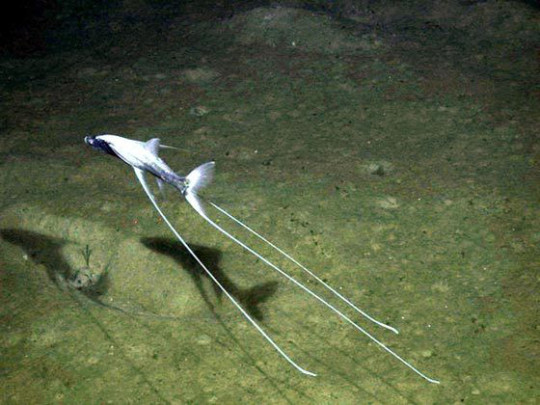
1 note
·
View note
Photo
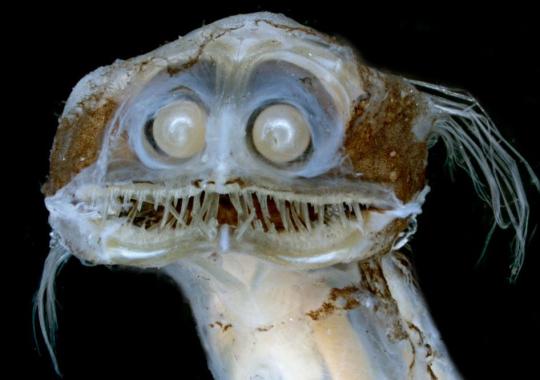
Telescopefish are small, deep-sea aulopiform fish. Though rarely captured, they are found in cold, deep tropical to subtropical waters worldwide.
The common name of these fish is related to their bizarre, tubular eyes.
They are slender, slightly tapered fish with large heads dominated by large, forward-pointing, telescoping eyes with large lenses. Their heads end in short, pointed snouts. The highly extensile mouth is lined with sharp, slightly recurved and depressible teeth and it extends well past the eyes.
5 notes
·
View notes
Photo

Telescopefish are small, deep-sea aulopiform fish. Though rarely captured, they are found in cold, deep tropical to subtropical waters worldwide. This fish looks like it has seen some things
2 notes
·
View notes
Photo
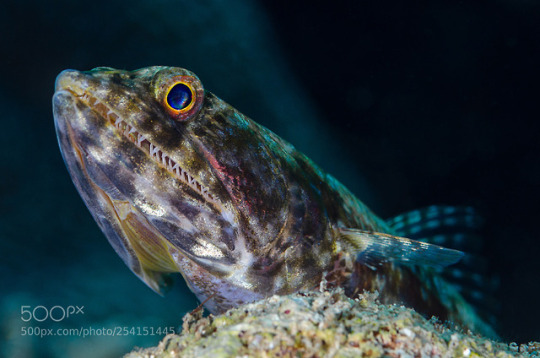
Lizardfish (lat.: Synodontidae) by tbanny Lizardfishes are benthic (bottom-dwelling) marine and estuarine bony fishes that comprise the aulopiform fish family Synodontidae. They are found in tropical and subtropical marine waters throughout the world. Lizardfishes are generally small, although the largest species measures about 60 cm (24 in) in length. They have slender, somewhat cylindrical bodies, and heads that superficially resemble those of lizards. The dorsal fin is located in the middle of the back, and accompanied by a small adipose fin placed closer to the tail. They have mouths full of sharp teeth, even on the tongue. Lizardfishes are benthic animals that live in shallow coastal waters; even the deepest-dwelling species of lizardfish live in waters no more than 400 m (1,300 ft) deep. Some species in the subfamily Harpadontinae live in brackish estuaries. They prefer sandy environments, and typically have body colours that help to camouflage them in such environments. The larvae of lizardfishes are free-swimming. They are distinguished by the presence of black blotches in their guts, clearly visible through their transparent, scaleless, skin. [Wikipedia]
7 notes
·
View notes
Text
Taxonomy Tournament: Fish


Ateleopodiformes. This order is made up of jellynose fishes aka tadpole fishes. They are bottom-dwellers with skeletons made largely of cartilage.
Aulopiformes. This order is made up of lizardfishes, many of which are deep-sea. Some are hermaphroditic with the ability to self-fertilise.
#animals#biology#polls#poll tournament#zoology#tadpole fish#fish#lizardfish#Ateleopodiformes#Aulopiformes#0x53v0xac#animal tournament#Animal Tournament Round 1
30 notes
·
View notes
Photo

Telescopefish are small, deep-sea aulopiform fish. Though rarely captured, they are found in cold, deep tropical to subtropical waters worldwide. This fish looks like it has seen some things
1 note
·
View note
Photo
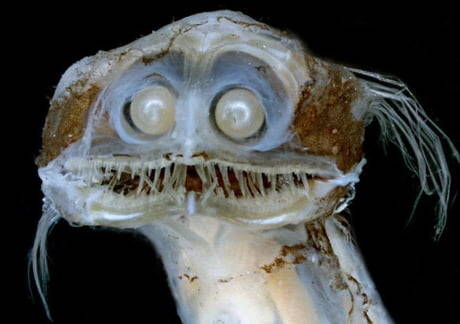
Telescopefish are small, deep-sea aulopiform fish. Though rarely captured, they are found in cold, deep tropical to subtropical waters worldwide. This fish looks like it has seen some things
1 note
·
View note
Photo

Lizardfish (Bathysaurus)
Photo by NOAA
#lizardfish#bathysaurus#bathysauridae#giganturoidei#aulopiformes#aulopa#eurypterygia#neoteleostei#euteleosteomorpha#clupeocephala#osteoglossocephalai#teleostei#teleosteomorpha#neopterygii#actinopteri#acanthopterygii#acanthomorpha#actinopterygii#osteichthyes#vertebrata#chordata
212 notes
·
View notes
Photo
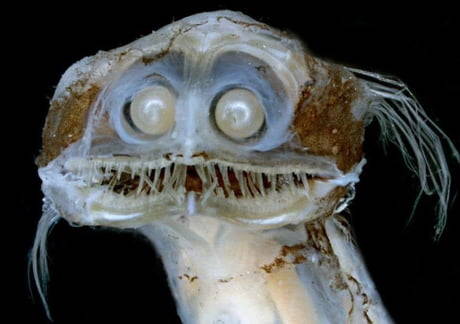
Telescopefish are small, deep-sea aulopiform fish. Though rarely captured, they are found in cold, deep tropical to subtropical waters worldwide. This fish looks like it has seen some things
1 note
·
View note
Photo

0 notes
Photo

@TollefScience: Another attempt at watercolors for this week’s #SundayFishSketch. I chose the Varigated Lizardfish (Synodus variegatus) as my representative Aulopiformes. I seem to have a thing for fish with red/orange eyes and barred lips. https://t.co/DGh2GruA3U
0 notes